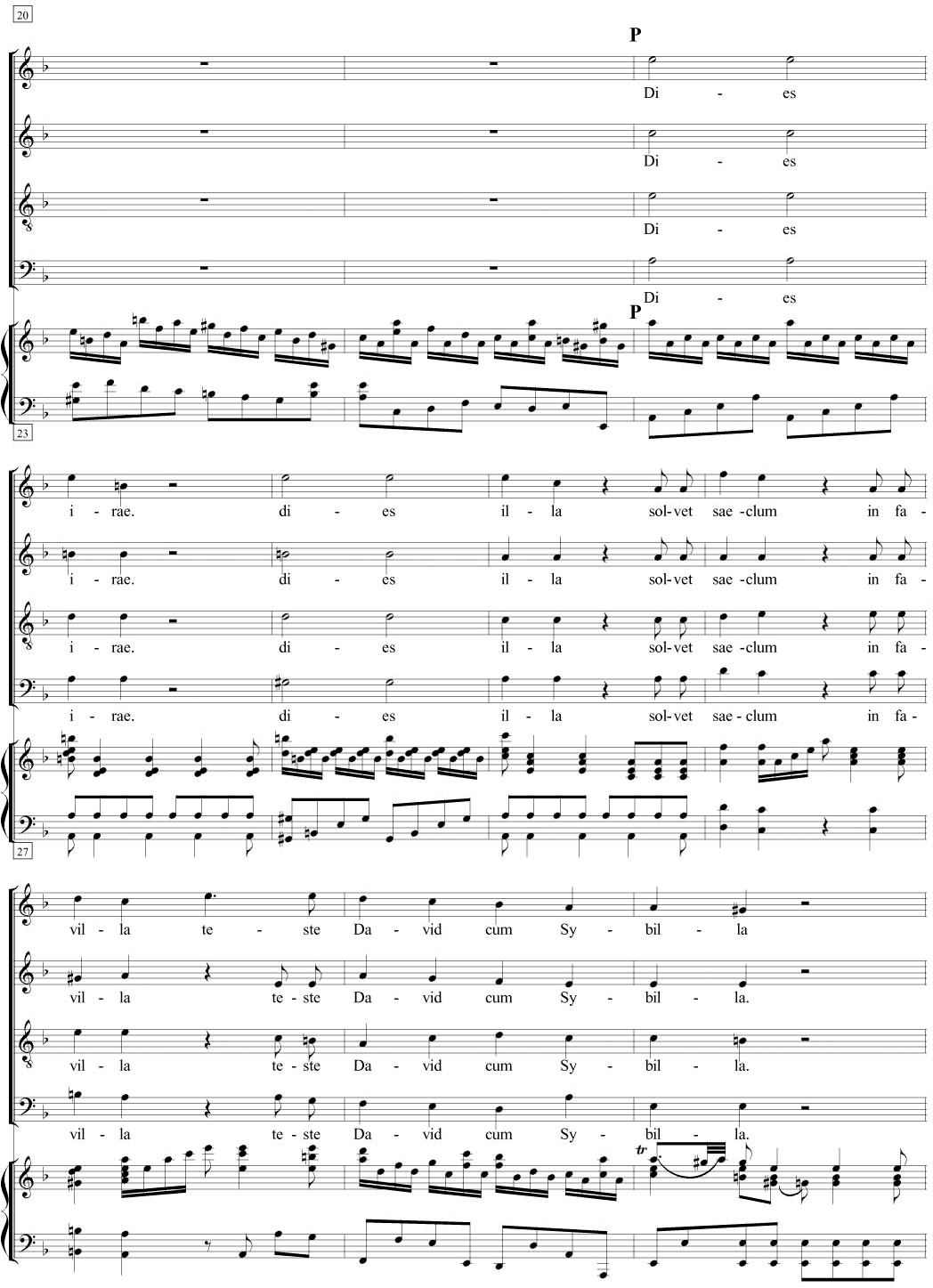Exercise 1

- You can use the chord in the context of a quick or slow tempo.
- What about looking at your own compositions again, maybe from the previous units or steps? To enrich the music, consider whether you could include this Neapolitan 6th chord somewhere?
- Think carefully. Look at some of your melodies. Which melodic note therefore would be suitable to employ the harmonies of a Neapolitan 6th? Consider the modulations or tonicisations too. Would you be able to shift your tonality and rewrite a part of your music in a different, more distant key.
Listen to this work – the Dies Irae from the Requiem Mass by Mozart, but not beyond 00:56 for this exercise.
Note where the chord of the flattened 6th appears. It’s usually fairly easy to locate due to it being a chromatic chord, but not necessarily here. To help you recognize it, here are a few tips:
- the key is D minor but it has modulated to A minor by bar 20. The chord of the flattened supertonic is therefore B♭/D/F
- It’s in its first inversion. Therefore, the lowest note is D. But remember to listen as well as look at the score.
Further Listening:
Lionel Richie: Hello – the Neapolitan 6th chord in 1':11" on the word want.